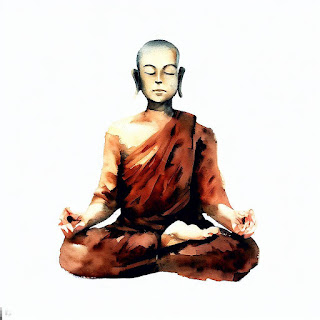Once, a senior Bhikku named Thera Cakkhupala went to visit and show respect to the Buddha at the Jetavana monastery. One night, while he was walking back and forth in deep meditation, the senior Bhikku accidentally stepped on some insects without noticing.
 |
| Blind Monk |
The next morning, some other Bhikkhus who were visiting the senior Bhikku found the dead insects. They formed a negative opinion about him and reported the incident to the Buddha. The Buddha asked them if they had actually seen the senior Bhikku intentionally killing the insects. Since they hadn't witnessed it, the Buddha explained that just as they hadn't seen him doing harm, the senior Bhikku hadn't seen those living insects either. Furthermore, as the senior Bhikku had already achieved a high level of spiritual enlightenment (arahatship), he couldn't have had any intention to kill, and thus he was innocent in this matter.
Dhammapada Verse 1
Cakkhupalatthera Vatthu
Manopubbangama dhamma
manosettha manomaya
manasa ce padutthena
bhasati va karoti va
tato nam dukkhamanveti
cakkamva vahato padam
All mental phenomena have mind as their forerunner; they have mind as their chief; they are mind-made. If one speaks or acts with an evil mind, 'dukkha' follows him just as the wheel follows the hoofprint of the ox that draws the cart.
Read more





